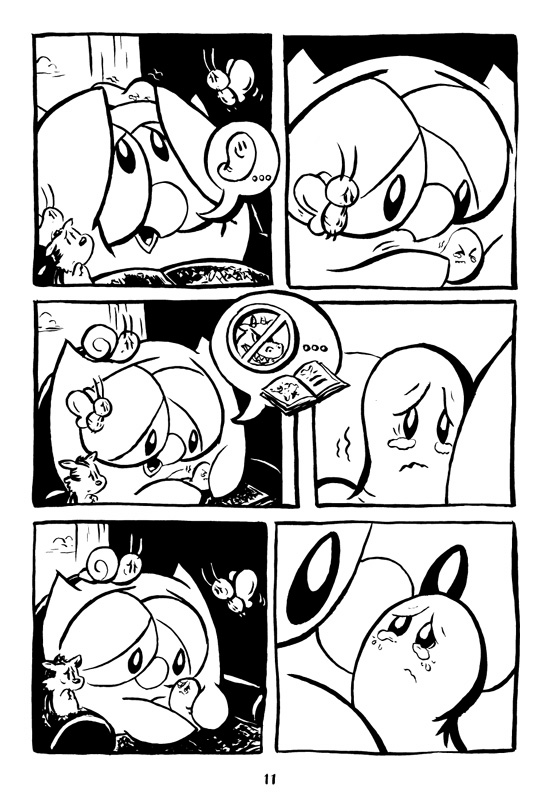Owly deals with the trials and tribulations of flightless owl and his many forest friends. Each book has a similar plot involving a challenge, resolution, and tears. Oh, goodness, the tears. These optical emissions change the book from a cute story to an epic adventure of overwhelming proportions. They increase the level of drama by a thousand. Just look:

From Owly: A Time to Be Brave
But in all seriousness, I love Owly comics. The stories are cute, but it’s the pictorial dialogue that most interests me. All speech is communicated through pictures (see above panels). This unique style left me with a question: what is the process that a reader goes through to comprehend pictorial dialogue? I could probably write a hundred pages about this topic and not finish analyzing it. I will probably come back to this idea later, but for now I am just going to explain how I understand Owly.
When I read comics, I view words and images separately, and my attention moves between the two. Because Owly and his crew communicate in images, I don’t need to jump back and forth between text and drawings. Instead, the process becomes much more complicated. I must extract all meaning by interpreting symbols, actions, and emotions, drawing on context and prior events. An exclamation mark could indicate happiness or be a warning. Sometimes, the characters speak in intricate symbols that take a few seconds to decode. In one such scene, Owly is talking to a distressed Wormy. The first speech bubble shows an arrow pointing out an open door, followed by an exclamation point. The subsequent speech bubble shows a smiling sun equaling (with an equal sign) a smiling, happy Wormy. Now how does one interpret that image? Is it “Let’s go outside! It’ll make you feel happy!” or “If we head out the door, the bright sun will make you feel less scared!” The process of viewing makes each individual’s reading experience unique. We each find a way of translating the pictures based off how we interpret these combinations of images.
In future posts, I plan to discuss how children (the intended readers) read Owly, and the various theories on comic books and child development.
No comments:
Post a Comment